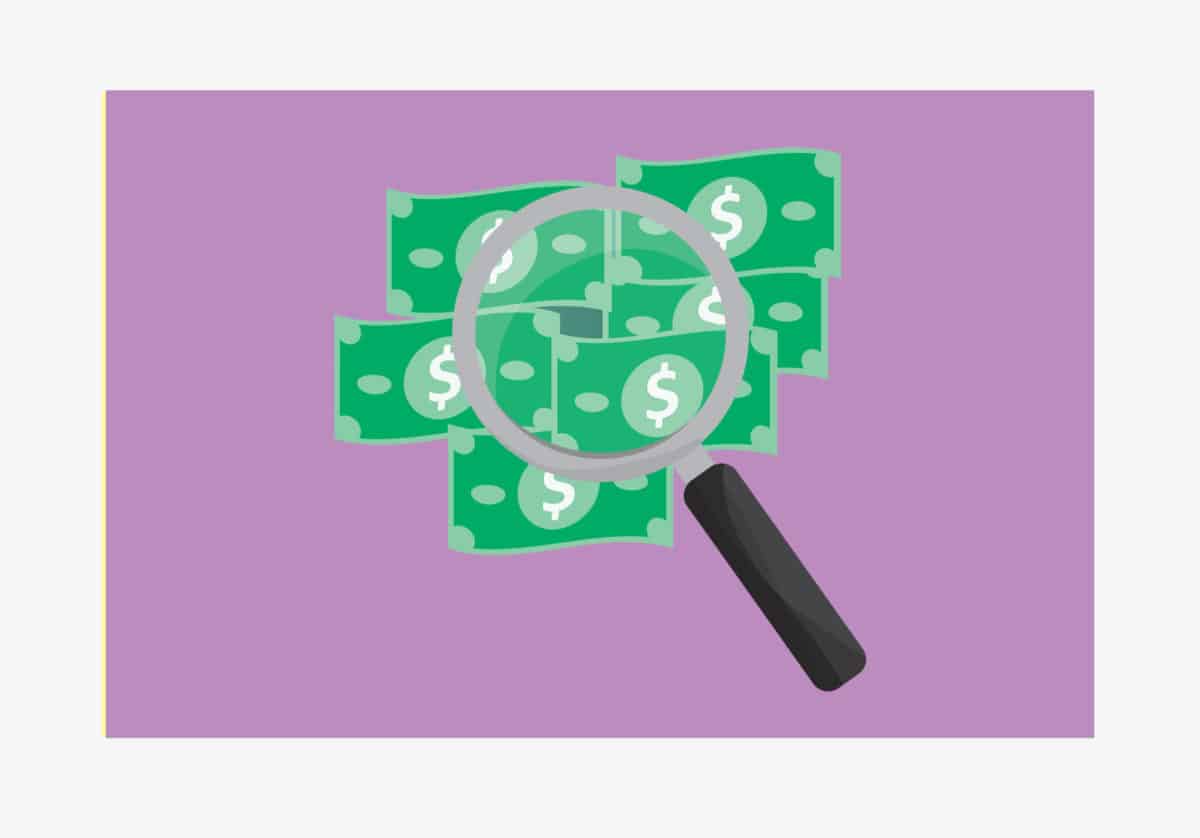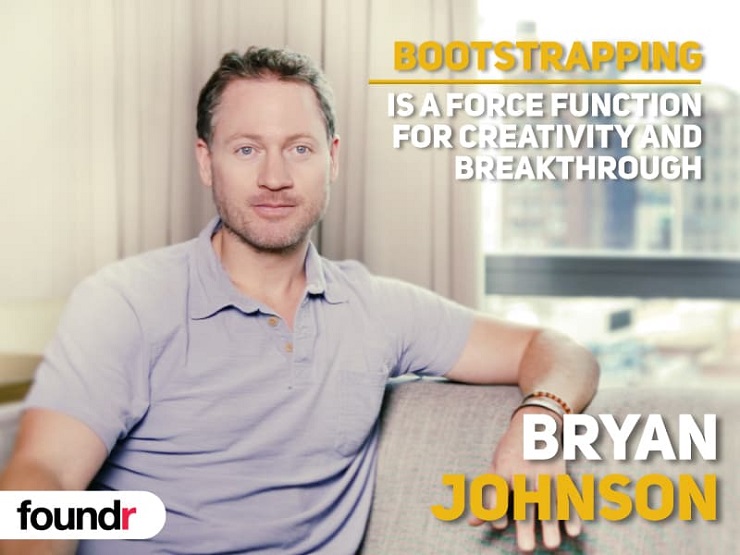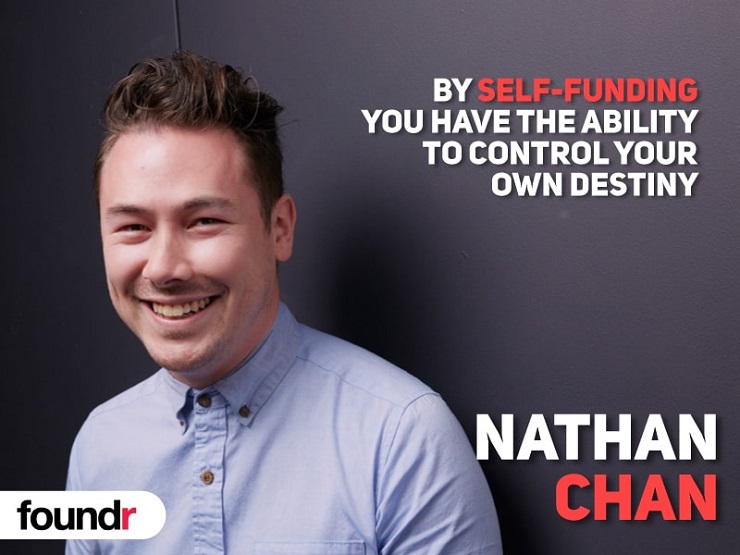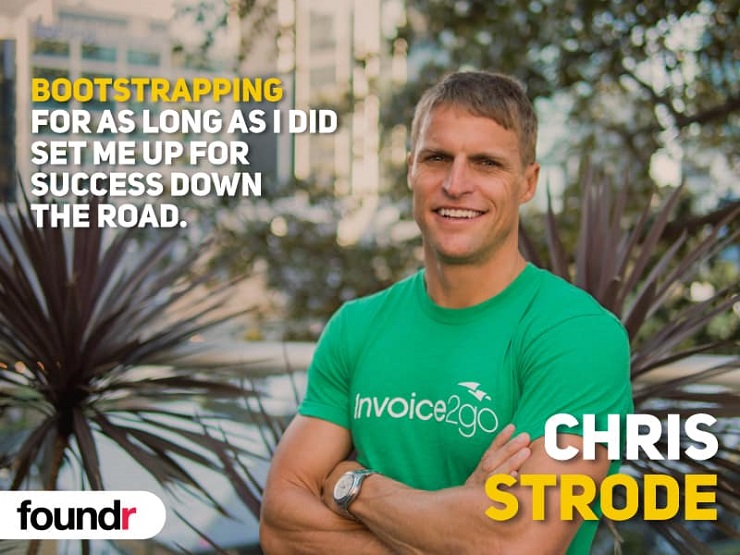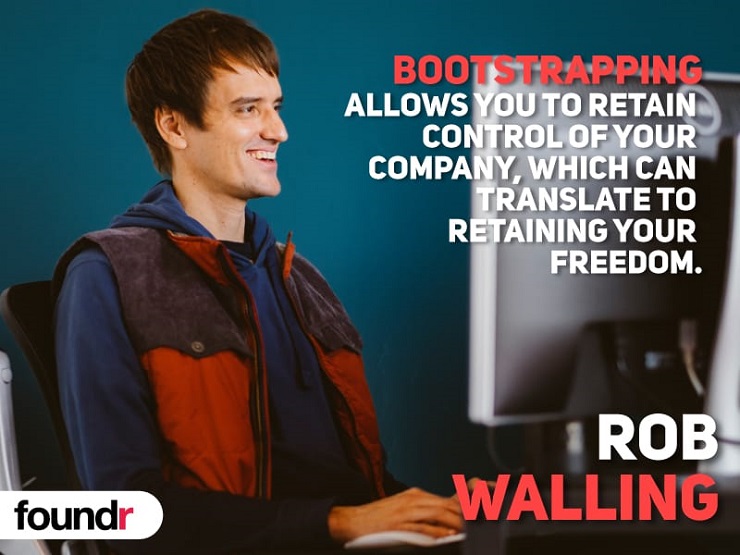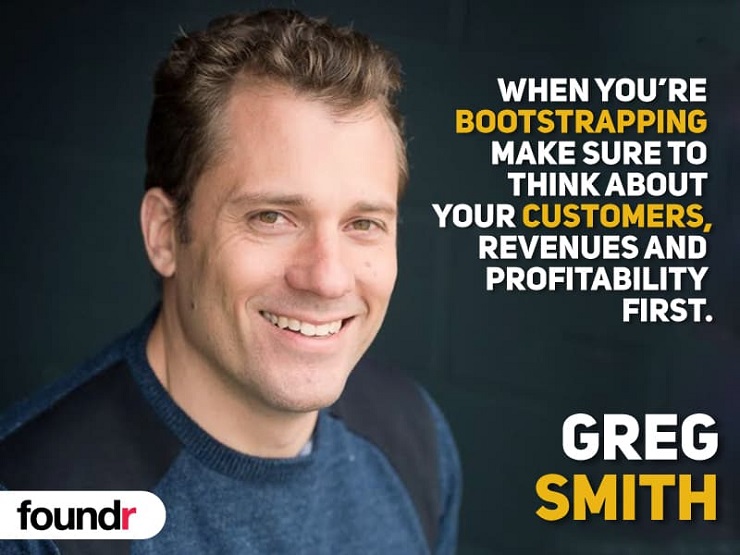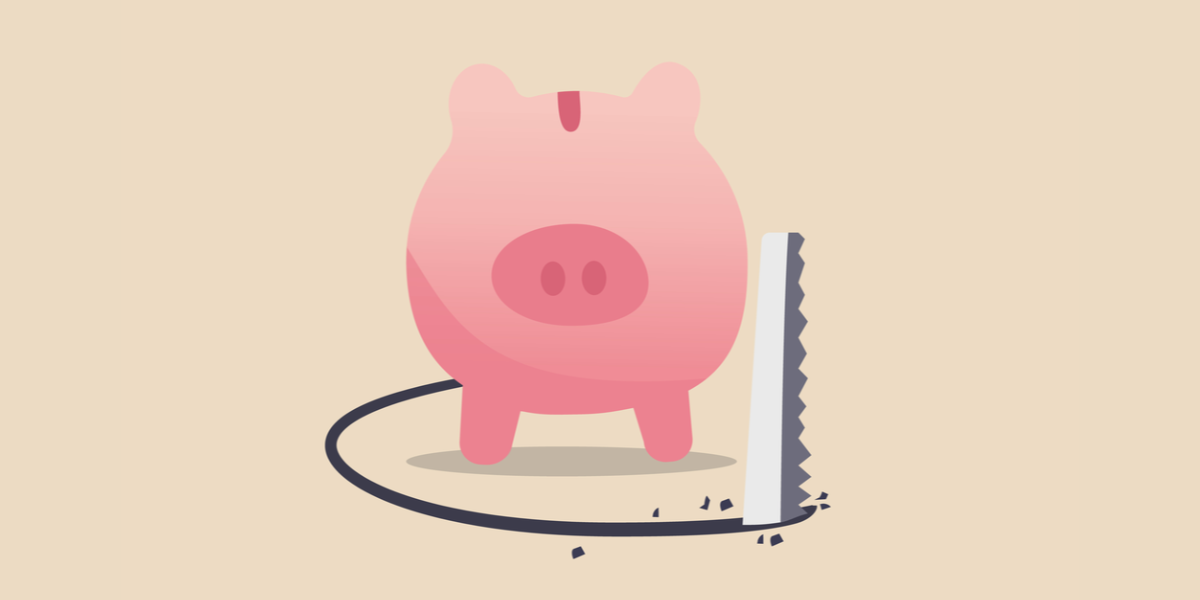A central challenge in the journey to becoming an entrepreneur is figuring out how to fund your startup. There’s a good chance you’re grappling with this problem right now.
If you’re just starting out, unless you won the lottery or happen to have a very eccentric uncle who won the lottery, you’re most likely looking at being a bootstrapping business entrepreneur. That is, building a business by relying on as little money as possible.
Entrepreneurs all over the world are in the exact same position you’re in right now—looking to self-fund their way to a successful business by pulling themselves up by their own bootstraps.
Since this process can be intimidating, we reached out to 11 inspiring entrepreneurs who not only bootstrapped themselves to success, but learned some very valuable lessons along the way.
Bootstrapping Entrepreneurship
-
-
- Bryan Johnson, Founder Braintree, OS Fund & Kernel: “Bootstrapping is a force function for creativity and breakthrough”
- Laura Roeder, Founder and CEO of MeetEdgar: “Bootstrapping is the best guarantee that you can run your business the way you want”
- Nathan Chan, CEO of Foundr Magazine: “By self-funding you have the ability to control your own destiny.”
- John Lee Dumas of EOFire: “When you bootstrap, you have to care about every potential customer, client and fan”
- Oleg Shchegolev, CEO and Co-Founder of SEMrush: “Having limited resources means you won’t survive unless you only focus on what brings the most value”
- Steve Shelley, Chairman and Co-Founder of Deputy: “Hire people that are on board with your vision, share similar values, and are prepared to work hard”
- Kate Morris, CEO and Founder, Adore Beauty: “‘Will spending this money help me acquire or keep a customer?’ If the answer is no, don’t spend it”
- Chris Strode, Founder of Invoice2go: “Bootstrapping for as long as I did set me up for success down the road”
- Rob Walling, Co-founder of Drip and MicroConf: “Bootstrapping allows you to retain control of your company”
- Christopher Gimmer, Co-founder at Snappa: “Bootstrapping forces you to relentlessly prioritize things that are actually going to move the needle”
- Greg Smith, CEO & Co-Founder at Thinkific: “When you’re bootstrapping, make sure to think about your customers, revenues, and profitability first”
- Ramy Georgy, Principal Dentist, Smiles of Melbourne: “Being a startup you have the luxury to test new things that bigger competitors aren’t doing yet”
-
We asked them these three questions:
-
-
- What are the benefits of bootstrapping?
- What’s your number one tip to get the most out of bootstrapping?
- What’s the biggest mistake people make when it comes to bootstrapping?
-
If you’re one of those intrepid entrepreneurs out there charging ahead with just the change in your sofa, you’ll definitely want to tuck away these priceless pieces of advice:
Bryan Johnson, Founder Braintree, OS Fund & Kernel
Bootstrapping is a force function for creativity and breakthrough. It’ll challenge you to think outside the box and to do things differently.
Bootstrapping is a force function for creativity and breakthrough.
In order to the get the most out of bootstrapping, you need to learn to become an expert in scarce resource utilization. The key is to find clever ways to maximize the value of every resource you have.
It’s important that bootstrapping be a tool in service of the objectives you care about the most, not the objective itself. It takes constantly questioning oneself to make sure these two are continuously aligned.
Laura Roeder, Founder and CEO of MeetEdgar
Bootstrapping is the best guarantee that you can run your business the way you want. When you have investors to answer to, you lose some of that freedom—and if you don’t live up to the expectations of whoever’s funding you, you could lose the investments that keep your business afloat!
Part of the fun of owning a business and being your own boss is being able to make big decisions, and being accountable only to your employees, your customers, and yourself. Why throw away one of the big reasons you got into entrepreneurship in the first place by giving someone else influence over how you operate your business?
Bootstrapping is the best guarantee that you can run your business the way you want.
Don’t expect that everything you do will max out its potential right away—leverage your work for cumulative results over time. If you write a blog post, don’t just share it once or twice right after it comes out. Share it over and over for as long as it’s relevant. Same with social media updates, or website copy, or videos. If you put the time and effort into doing something, squeeze as much out of that thing as you can!
Repeating your mistakes can be pretty costly for a bootstrapped business. When you try something and it doesn’t work, it can be really tempting to want to try it again and again until you succeed, but it doesn’t always work that way.
Know when to cut your losses. Identify things that don’t work, and find alternatives. Even when your bootstrapped business is established and off the ground, the costs of making the same mistakes over and over can add up fast!
Nathan Chan, CEO of Foundr Magazine
By self-funding you have the ability to control your own destiny.
When you bootstrap, you’re forced to do more with less, but you also don’t have the pressures on delivering a return on the VC’s money.
By self-funding you have the ability to control your own destiny.
Best piece of advice I can give about boostrapping is: Don’t go into debt to self-fund. Always lower your risks as much as possible.
One mistake I made was thinking way too small! I think when you bootstrap, you don’t think big and therefore don’t think about how how far you can take your company, which is part of the premise of raising venture capital (thinking big picture and selling it to investors).
John Lee Dumas of EOFire
When you bootstrap, you have to care about every potential customer, client, fan, etc., because they MATTER. You’re willing to have the one-on-one conversations that don’t scale, but the knowledge gained from those conversations will scale indefinitely in future products, services, and ideas.
When you bootstrap, you have to care about every potential customer, client and fan.
Oleg Shchegolev, CEO and Co-Founder of SEMrush
When you are bootstrapping your company, it is easier to involve your team. Your team members will feel that every effort now counts, see the real and immediate impact of their work, and have no choice but to set out to achieve their mutual goal. If you don’t do it, no one will. You can only count on yourself.
Having limited resources means you won’t survive unless you only focus on what brings the most value. Also, you are forced to always look for innovative ways to grow your company. This approach will help your company survive once you’ve grown to a point where your competitors want to chase you. But they can’t because it’s impossible to copy a creative approach.
Having limited resources means you won’t survive unless you only focus on what brings the most value
Be open and sincere with yourself and your employees. Be real and don’t be afraid to show your emotions. Don’t ever sacrifice your company or your team for the sake of politeness. Too many companies are stuck due to fear of giving people their honest feedback or opinions, or of upsetting someone.
The biggest mistake that a bootstrapped company can make is to start taking unnecessary actions that are not needed at a particular stage of the development. Don’t waste your time testing marketing channels that you can’t afford now or that are very competitive. It isn’t worth hiring people that can’t bring significant value in short term. There is no need to build sales if your product is not ready to be sold. It doesn’t make sense to start improving your product unless you tried selling it. The most important thing is to put all of your efforts on activities that can drive your business right now.
Steve Shelley, Chairman and Co-Founder of Deputy
Bootstrapping ensures you can provide a demonstrable value proposition and market fit, and enables clear metrics to be recognized around growth, market segments, and distribution channels.
The best advice I can give to anyone who’s bootstrapping is to hire people that are on board with your vision, share similar values, and are prepared to work hard. Once you have them, appreciate them!
Hire people that are on board with your vision, share similar values, and are prepared to work hard.
Don’t fall behind by exhausting yourself chasing every opportunity. Be selective, stay focused and agile.
Kate Morris, CEO and Founder, Adore Beauty
Bootstrapping forces you to find a business model that works – because you basically have no other choice! With limited cash, you are forced to quickly find a way to become cashflow positive. It’s also a great skill to learn how to be frugal, and not waste money on things that don’t deliver value for customers.
I got into the habit very early of asking myself before incurring any expense, no matter how tiny: “Will spending this money help me acquire or keep a customer?” If the answer is no, don’t spend it. I remember printing my own business cards back in the very early days because I didn’t want to spend all my money on a minimum print run of 500 cards.
‘Will spending this money help me acquire or keep a customer?’ If the answer is no, don’t spend it.
The biggest mistake I made when bootstrapping was doing it for too long. I got used to working within the constraints of minimal funding, but at a certain point that can stifle growth and hold the business back. Once you’ve found your product-market fit, you probably do need capital to scale.
Chris Strode, Founder of Invoice2go
Like so many founders, when I started Invoice2go, I didn’t have anything other than existing resources to put into my business idea, so bootstrapping was my only option.
It was hard in those early years, but bootstrapping for as long as I did set me up for success down the road. My advice to any entrepreneur would be to bootstrap as long as they possibly can before considering investment. It puts them in a much stronger position to negotiate with potential investors once they do get to that stage.
Bootstrapping for as long as I did set me up for success down the road.
With Invoice2go, we waited until we had our product offering right, our growth trajectory was booming, and we quite simply needed the funding to grow. The beauty of this was that we had retained complete control of the business during the growth phase.
This may seem obvious, but be as scrappy as you can with everything you do.
The biggest mistake you can make with bootstrapping is not paying attention to your business’ growth. You need to have a solid understanding of when your business has or will outgrow its current resources, and at what point you will start missing out on growth opportunities if you don’t seek funding.
Rob Walling, Co-founder of Drip and MicroConf
Bootstrapping allows you to retain control of your company, which can translate to retaining your freedom if you structure your business properly. And should you decide to raise funding at a later date, every dollar of revenue you earn while bootstrapping will increase that funding valuation.
Bootstrapping allows you to retain control of your company.
Christopher Gimmer, Co-founder at Snappa
When most people talk about the benefits of bootstrapping, they often point to the fact that you retain full ownership and that you’re in complete control of the company’s vision. While that’s totally true, bootstrapping also acts as a forcing function. When you’re not sitting on a pile of cash, bootstrapping forces you to relentlessly prioritize things that are actually going to move the needle.
For example, a VC-backed company might throw money at 10 different marketing channels, waste a bunch of money, then realize that only 1 or 2 are actually profitable. When you’re bootstrapping, you need to test channels first before throwing resources at them.
Another example is hiring. When a company raises a bunch of money, they typically go on a hiring spree. When you’re bootstrapped, you’ll only hire when it’s absolutely needed and you’ll take your time finding the absolute best candidate.
Bootstrapping forces you to relentlessly prioritize things that are actually going to move the needle.
Bootstrapping means that you don’t need to pursue growth at all costs. The reality is that not everyone can be a $1 billion company. And while plenty of bootstrapped companies make $1 million to $10 million per year and are very profitable, that would be considered a failure from a VC’s standpoint. However, trying to grow beyond that might not be feasible or profitable. So unless your business is growing really fast and you can see it generating $100 million per year, it probably doesn’t make sense to raise money.
The number one tip to get the most out of bootstrapping is to only work on things that are actually going to move the needle in your business. You simply don’t have the time or resources to do anything else. If it’s not moving your business forward, don’t bother.
I think one of the biggest mistakes people make (including us) when it comes to bootstrapping is not hiring, or hiring way too late.
Although you don’t want to overextend yourself and hire before you can afford it, you do need to realize that people are the biggest leverage points in a bootstrapped business. When we hired our first full-time developer, we started shipping code at a much faster pace. When we hired our first marketer, we were able to execute on a lot more campaigns and ramp up our acquisition. Early employees have a huge multiplier effect on your business.
Unless you have a very profitable paid acquisition funnel, I’d definitely prioritize hiring above anything else.
Greg Smith, CEO & Co-Founder at Thinkific
Best thing about bootstrapping? Freedom! Freedom to decide what you do, as well as when and how you do it. Everything from taking time off to travel, to transferring cash to your bank account when you need it. With one of my bootstrapped businesses, my brother and I took off to Indonesia for a few months to work on the beach.
When you’re bootstrapping, make sure to think about your customers, revenues, and profitability first. Figure out how these things will happen and when, and then get started making that happen immediately, rather than wasting time.
When you’re bootstrapping, make sure to think about your customers, revenues, and profitability first.
Also make sure not to outsource what you haven’t done yourself first. Outsourcing is great, but if you haven’t done it yourself first, you won’t have as good an idea if a good job is being done, or even what metrics to track.
Ramy Georgy, Principal Dentist, Smiles of Melbourne
Bootstrapping is where you learn the hard lessons yourself. When it’s your own money, every dollar counts and you’re invested in truly finding out what’s causing certain problems, and coming up with creative solutions—you start to innovate out of survival.
You learn the importance of cashflow and learn how to manage money and expenses. And when you reach profitability, you can do what you want—reinvest everything back into the business or take it out for your own lifestyle. With investors involved, you’re accountable for how you spent this money.
Naturally, when you start, you’ll do almost everything yourself to keep costs down. Being a startup you have the luxury to test new things that bigger competitors aren’t doing yet. For us, it was using Instagram, figuring it out early, and capitalizing on it (all for free) while most other dentists didn’t respect it enough as a platform to play on it.
Being a startup you have the luxury to test new things that bigger competitors aren’t doing yet.
There’s always tons of free things you can do, like running a more efficient backend, cutting out waste from expenses (if it doesn’t make you money, reconsider it), upskill yourself (or other early staff members) to get better at something (like upselling), look for different markets to sell your product/service to that wouldn’t normally seem like an obvious choice. You just need to get really creative, and having an obsession with your business also helps!
Don’t make the mistake of blowing money on things that don’t make money, like fancy decor or furniture. Or even basic equipment like computers, do you really need a brand new 27″ $3,000 iMac? When we first started, we bought refurbished iMacs for $350.
Another mistake is not selling. You just need to sell your product. To the person who can’t buy your product, offer a downsell, and to the person who has bought your product, offer an upsell. We also offer last-minute “bring a friend” type deals. None of this costs you anything extra, your customer acquisition cost is still the same, you just increase the value of your clients.
Ready To Bootstrap Your Business?
Bootstrapping is almost like a rite of passage for many entrepreneurs. If you pull it off, you come out the side wiser, scrappier, and ideally, richer.
As I read through all the wonderful responses that these founders have given, I’m struck by how much bootstrapping teaches the essential skills of entrepreneurship, from hiring to selling. The ability to be creative, to think outside the box, to stay focused, and to become resilient. In no other circumstance will you be forced to learn as quickly and as much as when you’re bootstrapping.
What lessons have you learned from bootstrapping? What piece of advice are you excited to put into action? Let us know in the comments below!
